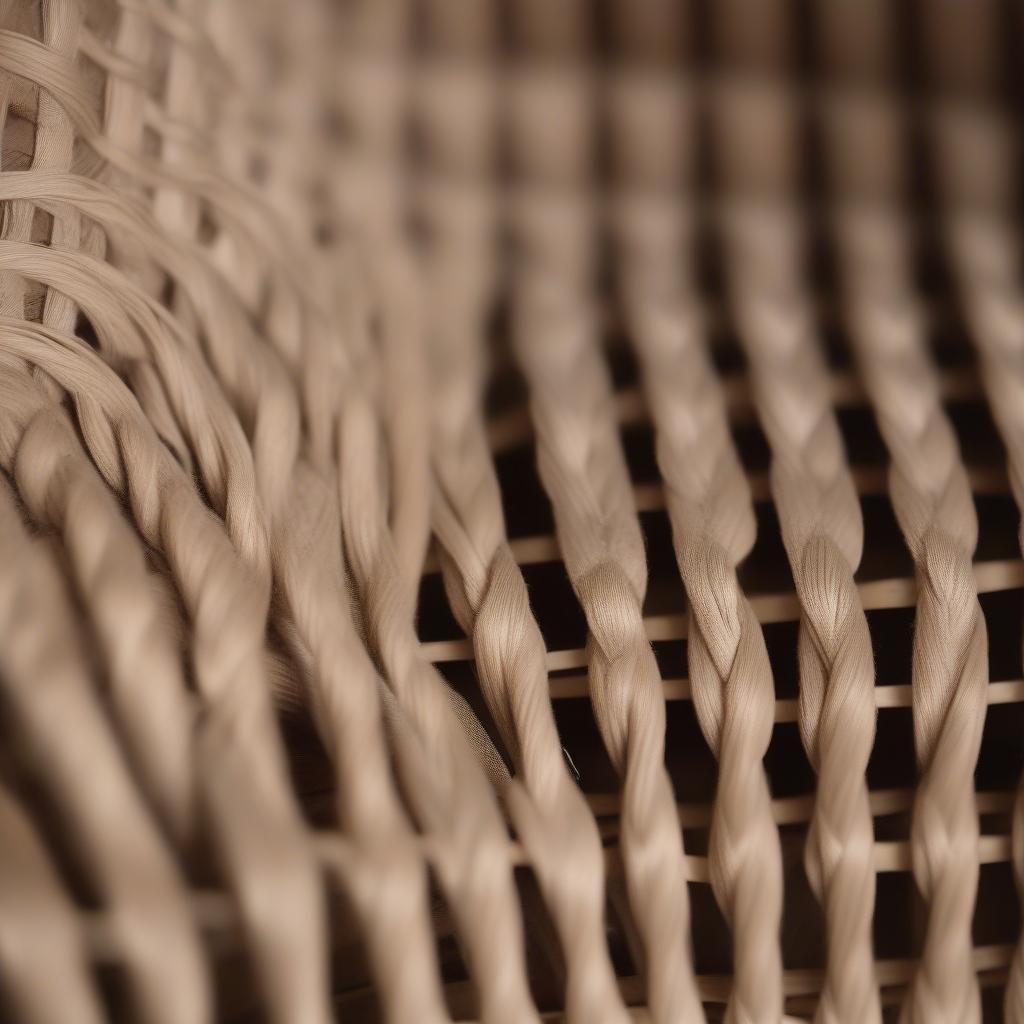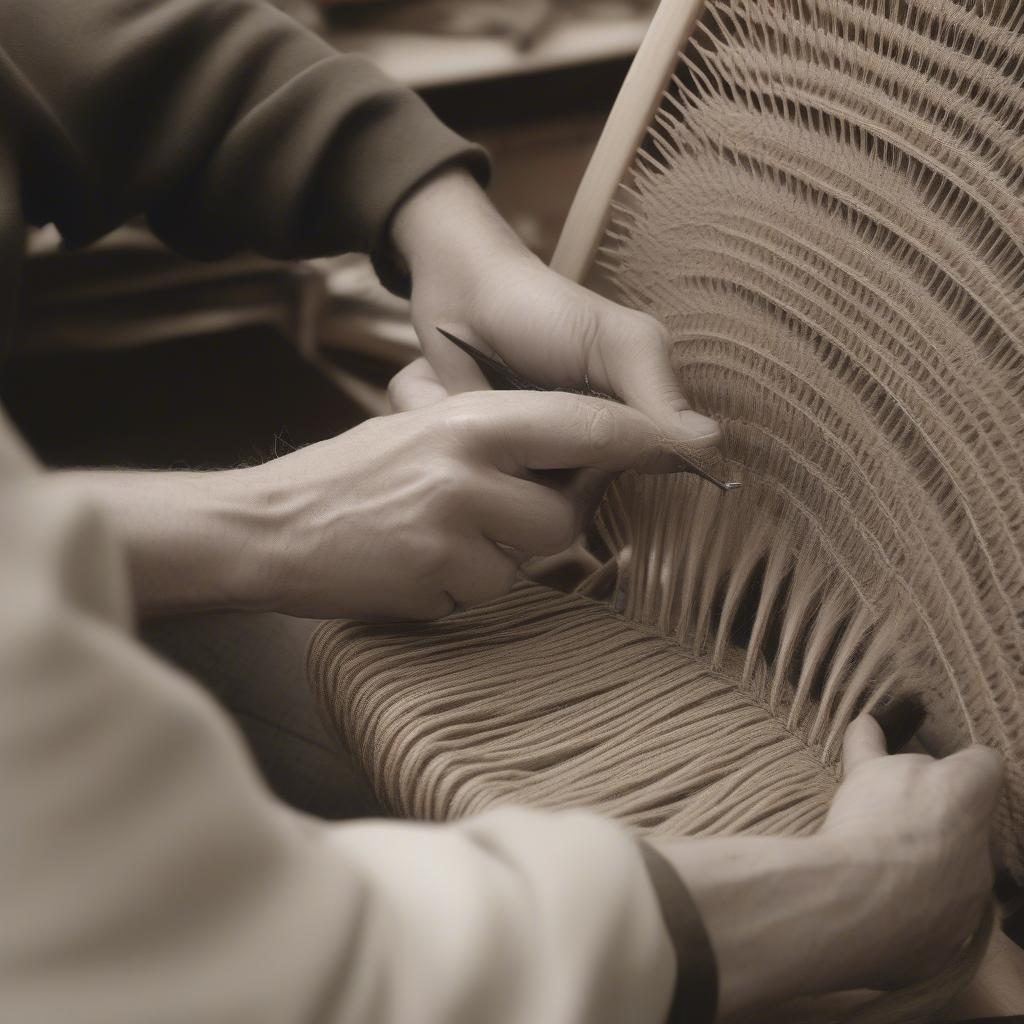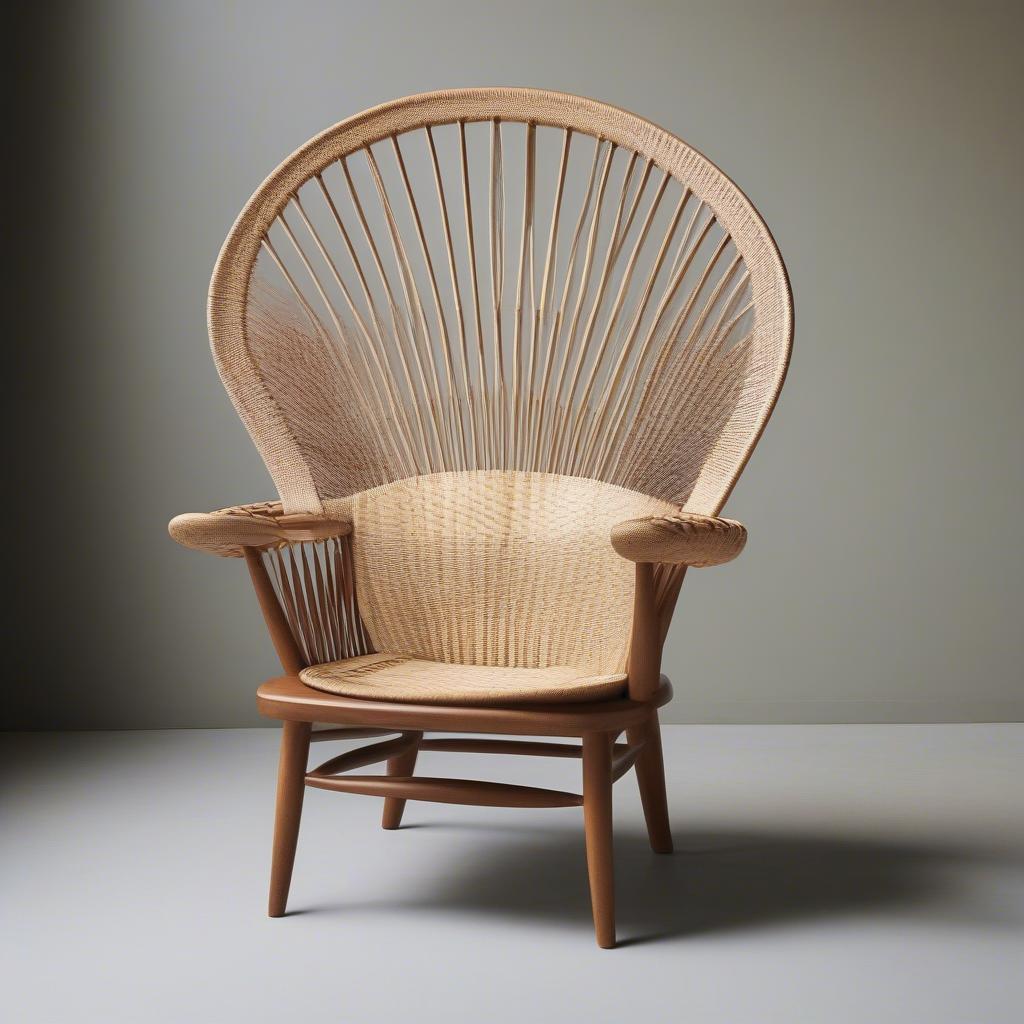Weave Chair
Wegner Peacock Chair Seat Weaving: A Comprehensive Guide
Wegner Peacock Chair Seat Weaving is a specialized craft requiring patience, skill, and an appreciation for Danish modern design. This guide will delve into the intricacies of restoring or replacing the woven seat of your iconic Wegner peacock chair, covering everything from material selection to weaving techniques.
Understanding the Wegner Peacock Chair and Its Iconic Seat
The Hans J Wegner Peacock chair, also known as the JH550, is a masterpiece of mid-century modern design. Its distinctive fan-shaped backrest, reminiscent of a peacock’s tail, gives the chair its name. The seat, traditionally woven from natural materials, is crucial to both the chair’s comfort and aesthetic appeal. Whether you’re dealing with a vintage piece requiring restoration or a newer model needing a fresh seat, understanding the materials and techniques involved is essential.
 Close-up view of a Wegner Peacock chair highlighting the intricate seat weaving.
Close-up view of a Wegner Peacock chair highlighting the intricate seat weaving.
Choosing the Right Material for Wegner Peacock Chair Seat Weaving
The most common materials used for Wegner peacock chair seat weaving are paper cord and Danish cord. Paper cord, made from twisted paper fibers, offers a firm yet comfortable seat and is relatively easy to work with. Danish cord, a more traditional option, is made from twisted paper covered with a durable cellulose core. It provides a slightly more robust and structured feel. Choosing the right material depends on personal preference, the chair’s age and style, and the desired level of comfort and durability.
A Step-by-Step Guide to Wegner Peacock Chair Seat Weaving
While the specific weaving pattern may vary slightly depending on the chair model, the basic principles remain the same. Here’s a simplified guide to get you started:
- Preparation: Carefully remove the old weaving if restoring a vintage chair. Inspect the frame for any damage and make necessary repairs.
- Starting the Weave: Secure the starting end of your chosen cord to the frame. There are various starting knots and techniques, so research the one best suited for your chair.
- Creating the Pattern: Follow the original weaving pattern, often a variation of a traditional Danish cord weave. This involves passing the cord over and under the frame members in a specific sequence to create a strong and visually appealing pattern.
- Maintaining Tension: Consistent tension is crucial for a beautiful and durable seat. Ensure the cord is pulled taut but not overly tight throughout the weaving process.
- Finishing the Weave: Secure the end of the cord with a knot that is both strong and discreet. Trim any excess cord.
 Hands actively weaving the seat of a Wegner Peacock chair, demonstrating the process.
Hands actively weaving the seat of a Wegner Peacock chair, demonstrating the process.
Common Challenges and Troubleshooting Tips
- Uneven Tension: This can result in a lumpy or sagging seat. Practice maintaining consistent tension throughout the weaving process.
- Broken Cord: If the cord breaks, carefully tie a knot to join the ends and continue weaving.
- Difficulty Following the Pattern: Refer to diagrams or videos specific to your chair model.
Caring for Your Newly Woven Peacock Chair Seat
To prolong the life of your newly woven seat, avoid placing the chair in direct sunlight or excessively humid environments. Regular dusting and occasional cleaning with a damp cloth will help maintain its beauty.
“Maintaining proper tension is the key to a successful weave,” says John Carpenter, a renowned furniture restorer with over 20 years of experience. “It ensures both the beauty and longevity of the seat.”
 A fully restored Wegner Peacock chair with a newly woven seat, showcasing the final result.
A fully restored Wegner Peacock chair with a newly woven seat, showcasing the final result.
Conclusion
Wegner peacock chair seat weaving is a rewarding project that can breathe new life into a cherished piece of furniture. By understanding the materials, techniques, and potential challenges, you can achieve a professional-looking result and enjoy the comfort and beauty of your restored or newly woven peacock chair for years to come.
FAQ
- What type of cord is typically used for Wegner peacock chairs? (Paper cord and Danish cord are the most common choices.)
- How long does it take to weave a peacock chair seat? (It depends on the weaver’s experience and the complexity of the pattern, but it can take several hours.)
- Can I weave the seat myself, or should I hire a professional? (With patience and practice, many people can successfully weave their own seats. However, for complex patterns or vintage chairs, professional restoration might be preferred.)
- Where can I find replacement cord for my Wegner peacock chair? (Specialty craft stores and online retailers often carry paper cord and Danish cord.)
- What is the average cost to have a peacock chair seat professionally woven? (Prices vary depending on the location and the restorer, but expect to pay a significant amount for professional restoration.)
- How do I care for my woven peacock chair seat? (Avoid direct sunlight and excessive humidity, dust regularly, and occasionally clean with a damp cloth.)
- What are some common mistakes to avoid when weaving a peacock chair seat? (Uneven tension and incorrect pattern following are common pitfalls.)
Need help with your Wegner Peacock Chair seat weaving? Contact our Hotline: +84 388 951 999, or visit us at Hanoi, Vietnam or Tech Avenue, Suite 12, San Francisco, CA 94105, USA. Our 24/7 customer service team is ready to assist you.
